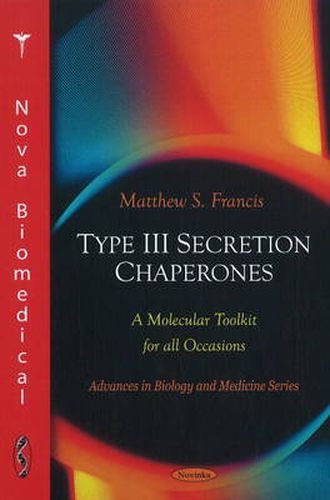Readings Newsletter
Become a Readings Member to make your shopping experience even easier.
Sign in or sign up for free!
You’re not far away from qualifying for FREE standard shipping within Australia
You’ve qualified for FREE standard shipping within Australia
The cart is loading…






Common to many bacteria is the ability to establish a symbiotic relationship or to evade innate immune responses of an animal, plant, fish or insect host. Most often this capacity is mediated by a type III secretion system (T3SS). The function of these complex molecular machines is likened to a syringe-needle injection device that is dedicated to the translocation of effector proteins directly into target eukaryotic cells. Unlike traditional molecular chaperones, these specialised type III chaperon do not assist in protein folding and are not energised by ATP. Controversy still surrounds their primary role; as bodyguards to prevent premature aggregation or as pilots to direct substrate secretion through the correct T3SS. Moreover, some chaperones display a bewildering propensity to interact with several additional T3S-associated proteins - the relevance of which remains uncertain. Structural data has now appeared for several important type III chaperones, either alone or in complex with their cognate substrate.
$9.00 standard shipping within Australia
FREE standard shipping within Australia for orders over $100.00
Express & International shipping calculated at checkout
Common to many bacteria is the ability to establish a symbiotic relationship or to evade innate immune responses of an animal, plant, fish or insect host. Most often this capacity is mediated by a type III secretion system (T3SS). The function of these complex molecular machines is likened to a syringe-needle injection device that is dedicated to the translocation of effector proteins directly into target eukaryotic cells. Unlike traditional molecular chaperones, these specialised type III chaperon do not assist in protein folding and are not energised by ATP. Controversy still surrounds their primary role; as bodyguards to prevent premature aggregation or as pilots to direct substrate secretion through the correct T3SS. Moreover, some chaperones display a bewildering propensity to interact with several additional T3S-associated proteins - the relevance of which remains uncertain. Structural data has now appeared for several important type III chaperones, either alone or in complex with their cognate substrate.